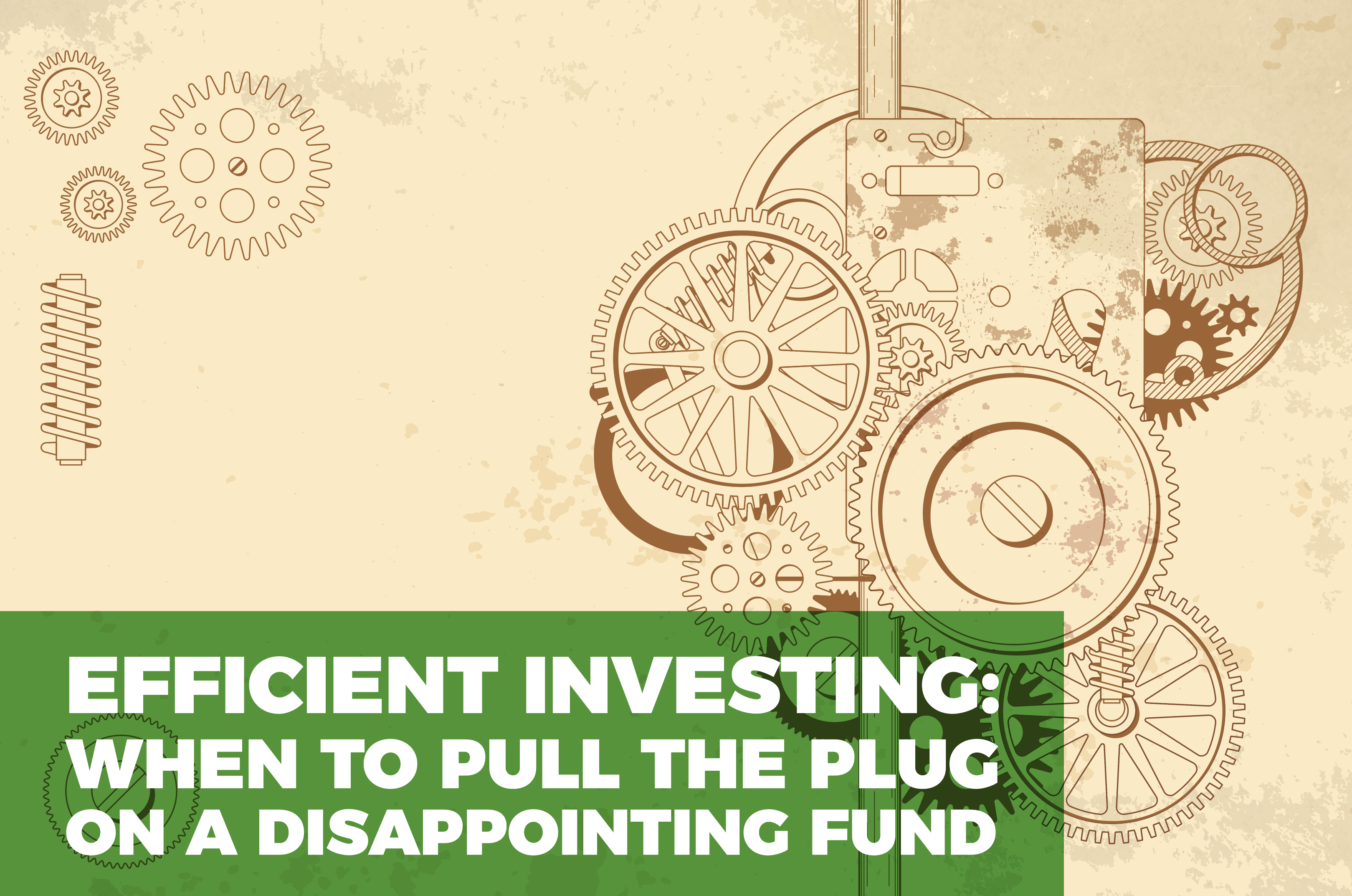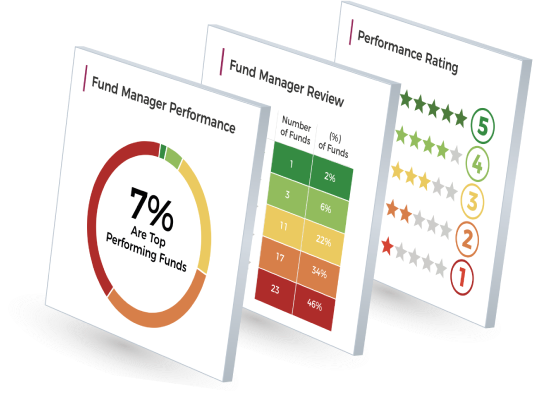
The heavy losses experienced by a large proportion of investors during the Global Financial crisis created a fear that led many to assume a more cautious approach with their investments. While this caution seemed warranted at the time, now that markets have recovered so too has the confidence of investors, with 63% of UK investors optimistic about the growth potential of their investments over the next 12 months.
But as markets continue to grow investors are now ready to embrace more risk in the pursuit of even greater returns - with 32% of UK investors stating they expect to increase the level of risk they assume with their investments over the next 12 months (according to data from Legg Mason’s recent Global Investment Survey).
While inherently riskier, this approach may also be completely unnecessary.
The fact is, the increased confidence demonstrated by many investors is a result of thriving markets rather than the quality of the funds they are invested in. Therefore, when markets are performing well, as they have been, even a portfolio that is comprised of comparatively poor performing funds can deliver a level of return that flatters and often leads investors to be of the opinion that their portfolio growth is a result of the quality of their underlying funds.
As a result, many investment portfolios are being weighed down by poor fund choice that investors should consider discarding and replace with better performing alternatives.
By simply ensuring a portfolio comprises of funds that consistently rank among the best performers within their particular sectors, investors can benefit from significantly greater returns - without increasing their investment risk.
Find out if your portfolio contains underperforming funds.
There are a variety of factors that determine which funds investors use in their portfolios - such as the recommendations of an adviser or the opinions and conclusions we have formed over time from media exposure. But, regardless as to why a fund makes it into your portfolio the simple truth is that only a small proportion of the thousands of funds that are available are persistently able to outperform competing funds within the same sector. These ‘top performing funds’ are managed by fund managers who have proven their expertise within a particular sector through their ability to deliver competitive returns over a prolonged period of time - readers beware - just because a fund is actively marketed to investors, does not mean it is actively outperforming its peers. When analysing a fund it helps to compare the results of that fund against all other same sector funds - only then are you comparing like for like.
Determine whether your portfolio contains underperforming funds and this will help you identify areas for improvement. Through the Yodelar portfolio analysis tool you are able to instantly gain a precise insight into the performance and sector ranking for each fund within your portfolio. This definitive analysis will help to identify the quality of your investments and assess whether or not improvements can be made.
You simply insert the fund names and amount invested in each, and the system will show the history of all funds, comparing them to all other same sector funds.
A portfolio review will provide 2 main outcomes. It will either reaffirm the quality of your existing investments and provide you with confidence that your portfolio is efficiently maximising your returns, or it will pinpoint underperforming funds that have had a detrimental impact on your portfolios performance.
Knowing when to hold 'em and when to fold 'em.
Over time, political and economic forces, departure of an experienced fund manager, as well as changing market conditions can have a significant impact on how well a fund performs. As a result, funds that may have previously enjoyed strong performance can suffer a decline in performance, falling down the sector ranking. For some funds, such performance swings may be short term were they quickly bounce back, but for others it can be the start of a prolonged period of underperformance that can have a sizeable impact on a portfolios overall returns.
But how do we know when to hold 'em, or when to fold 'em?
Efficient investing - The Investment traffic light system.
For both advisers and investors there are different metrics for determining the right time to drop a fund and replace it.
However, a popular system utilised by some specialist wealth management firms is the traffic light system, which uses a 3-tiered fund grading model that promotes a pragmatic investment approach and helps to avoid impulsive decisions.
The Investment traffic light system
Green – Funds that have primarily maintained a level of performance that exceeds 75% of same sector funds over the recent 1, 3 & 5 year periods. Such funds are viewed as top performers and represent excellent investment opportunities. When constructing a portfolio, it is predominantly funds with a green rating that are considered.
Amber – Funds that have previously rated as green but recently experienced a decline in performance comparative to other funds within the same sector. Amber funds remain within the portfolio but are carefully monitored, typically over a 3-6 month period, to identify whether its performance has improved, remained stagnant or declined. If the fund’s performance has improved to a level greater than 75% of competing same sector funds it returns to being a green rated fund. If it remains stagnant it will continue to receive an Amber classification for a period up to 6 months. If no improvement is seen during this period it will receive a red classification.
Red - The red traffic light signifies the fund is to be removed from the portfolio and replaced with a suitable green rated fund. Funds will be moved to a red rating if they continue to drop down the sector ranking over a 3-6 month period, or if they fail to improve 6 months after receiving an amber rating.
This system is to help ensure each portfolio is comprised only of funds that have predominantly outperformed their peers.
Top tip -
Top firms use the above approach to ensure their funds under management are performing for their own success as well as their clients success. They must analyse their funds against all other sector funds and identify times when a conversation is required with a favoured fund manager.
Communication is important between fund managers and an advice firm. Fund managers are accountable to wealth management / advice firms, and have a fiduciary duty in the same way your adviser has to you as a client.
Make sure you work with a firm that is independent and implements these processes. Contact us should you wish to be recommended to a firm that implements such due diligence in their clients interest.
Building a portfolio of TOP performing funds.
Identifying if your portfolio contains underperforming funds is essential to improving your portfolios performance. But equally important is the choice of funds which are selected to replace them.
The Yodelar best funds report is a monthly report that details the recent 1, 3 & 5-year performance and sector rank for over 3,000 unit trust & OEIC funds. Each fund is rated from 1 to 5 stars based on how they performed in comparison to all other funds within the same investment sectors. This report provides clarity as to which funds have factually been the top performers and delivered the most competitive returns for investors on a consistent basis.
Investors are continually informed that past performance is not an indicator of future success, but in every aspect of life past results/quality of work is an important metric in choosing a product or service provider. Of course, no one knows what the future holds but fund managers who have consistently achieved top performance offer better potential than those who have a history of poor performance.
Past performance can identify fund manager expertise, and an ability to do better than their peers. In every industry past performance is relevant - the investment sector is no different.
Continued analysis and reviews .
As an investor, there are many strategies to choose from, but ultimately, no matter what model or investment strategy you choose to follow, the priority should be to invest efficiently by building a portfolio of quality funds that fits within a suitably balanced risk model.
To maintain efficiency your investment portfolio should be rebalanced at least twice per year to ensure it continues to fit the desired risk profile - on top of this regular performance reviews will help to ensure your portfolios performance is on target.


















